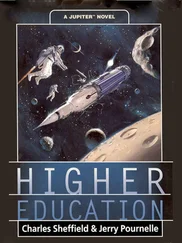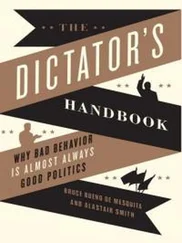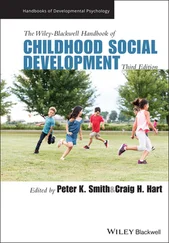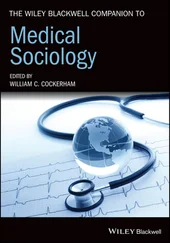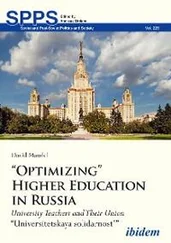The initial year of the project involved greater set‐up time than in later years. As a result, one interviewee acknowledged that his academic work was negatively affected by his participation. However, he saw that learning through the project could compensate for any negative educational impacts:
Provided the [garden foundations] were in, I knew future years would have an easier time. They'd still struggle but they'd have an easier time. But you know, that's part of the learning curve, understanding how you have to integrate sustainability with everything else you are doing, even as students. So I think if it does affect people's grades in the future I think it compensates for the skills it gives. The only problem is there's no quantification for those skills that are learnt in a project like this other than references or fitting it in somewhere and talking about the key skills you have developed, but there's no qualification for it.
(Student 2, Year 1 of project)
This student acknowledged that the learning that took place was informal, unquantified, and potentially unrecognized. Because there is no formal recognition of this learning, students must rely on their ability to articulate it, first to themselves, and then to others.
It is notable that this student, who appeared willing to sacrifice individual academic achievement for the project, expressed his goals for the project through language clearly aligned with activism. He highlighted students' rights to grow food, and the desire to drive long‐lasting change through a project with temporal continuity.
As this project sits purely within the informal curriculum with no real accountability other than to each other for project achievements, it is unsurprising that for many students the SSH took a backseat to other commitments. For many, trying to find a workable balance between the project's goals, their academic studies, and normal student social life seemed elusive.
Although burnout was not mentioned by any students interviewed, the subtext of the interview with Student 3 (Year 2) hinted at symptoms of burnout. We have also observed burnout in students involved in this and other sustainability activist projects in later years, including seeing the negative implications to their academic studies. In the context of activism, burnout can be described as “the end result of a process in which idealistic and highly committed people lose their spirit” (Pines 1994, p. 381). Many studies of youth activism have highlighted the dangers of burnout (e.g. Gagnon 2020). In addition to their activism, student activists are faced with academic pressures, leading to risk of more immediate and intense burnout (Gagnon 2020). Although acknowledging the learning and growth that can occur as a result of engaging in activism, activism takes students’ time and energy away from activities that lead to educational benefits and college experiences (Linder et al. 2019) and can result in negative physical, emotional, and mental health consequences (Vaccaro and Mena 2011). Burnout in young activists can mean that, without finding the right support systems, they might fail to meet their potential (Gagnon 2020). Furthermore, activist burnout can lead to the destabilization of activist movements (Gorski and Chen 2015). Although we believe that activist learning is a good thing, without proper support and care it can come with problems, which may be exacerbated by the combination of: deeply rooted passion and motivation; lack of formal structure, support, and accountability; diverse motivations and expectations; and diverse and competing time pressures. Academics supporting student activism need to consider effective mechanisms to support student activists through both the formal and non‐formal/informal curriculum.
We have explored some of the challenges of the SSH project and student activism in general, set against some of the learning such projects enable. In Section 2.4, we will explore the implicit and articulated learning and development of students from participation in the SSH project.
2.4 Areas of Student Learning: Embodied vs. Abstract Learning
As staff members interested in ESD and observers of the project, we saw the substantial potential for learning from the project: appreciating that enacting change is not as simple as the desire to see it happen; the level of research and decision‐making needed to underpin action; increased awareness of barriers to implementing change and how to overcome them; the range of different stakeholders and perspectives necessary in change processes; and the skills of lobbying, negotiation, persuasion, working with people constructively, public speaking, and grant application writing. All these learnings are in addition to the adoption of more pro‐environmental behavior. Our list of possible learning outcomes is long; however, are they achieved, and if not, how can such learning potential be realized?
Unsurprisingly, with such diverse motivations for taking part in the project, the learning students articulated was varied. The most frequently articulated learnings, for those not already viewing themselves as knowledgeable in these areas, were on everyday, visible practices such as recycling, composting, and food growing, and for some, increasing awareness of energy use through use of an in‐home energy display. When prompted, students were able to articulate that they had developed generic skills important for change agents, such as interpersonal communication skills and writing for an audience and managing multiple, competing tasks. The transformative learning about driving change that we envisaged, such as developing skills related to interacting and negotiating with different stakeholders toward a desired outcome, were not articulated by students in the interviews, in spite of being something we observed. One student did express learning about the nature of driving change:
It seems like it's very easy to just say [ideas] out loud and put them up, but when it actually comes to sitting down and planning them, fitting it in, trying to get the communication, the contacts we need, it's quite difficult.
(Student 4, Year 2 of project)
It could be somewhat disheartening to see limited articulation of deeper areas of learning, and a focus on learning of everyday practices. However, this could be in part due to the lack of reflection on learning, and the more abstract nature of their learning. As ESD academics and practitioners, we aspire for our students to develop broader sustainability competencies and a deeper understanding of systemic causes of unsustainability.
Yet the interviews highlighted that there is a need to develop basic competencies related to sustainable everyday practices. For example, one international student had never experienced waste segregation for recycling and developed new patterns of behavior:
Now after a year it's kind of now become in our pattern of life and it's the right thing to do, so doing it the other way just would not fit.
(Student 4, Year 2 of project)
All students were eager to take their practical learning into their future lives. One interviewee also highlighted that focusing on sustainable living in the home gave them the “first hand experience” of sustainability, which would inevitably lead to more activity outside the home and advocacy with others:
If you get into doing it at home, learning why it's important and how it can help you and not only you, I think you would start doing it more often outside of the house and speaking about it to more people, because it's first‐hand experience.
(Student 4, Year 2 of project)
Another student highlighted the importance of universities as places where students could develop sustainable everyday living practices:
I think that universities are the perfect place for it because people are moving out of their house, you need to develop those kind of skills anyway, whether it's cooking or growing food or being self‐sustaining in general. It's the perfect place for it.
Читать дальше

